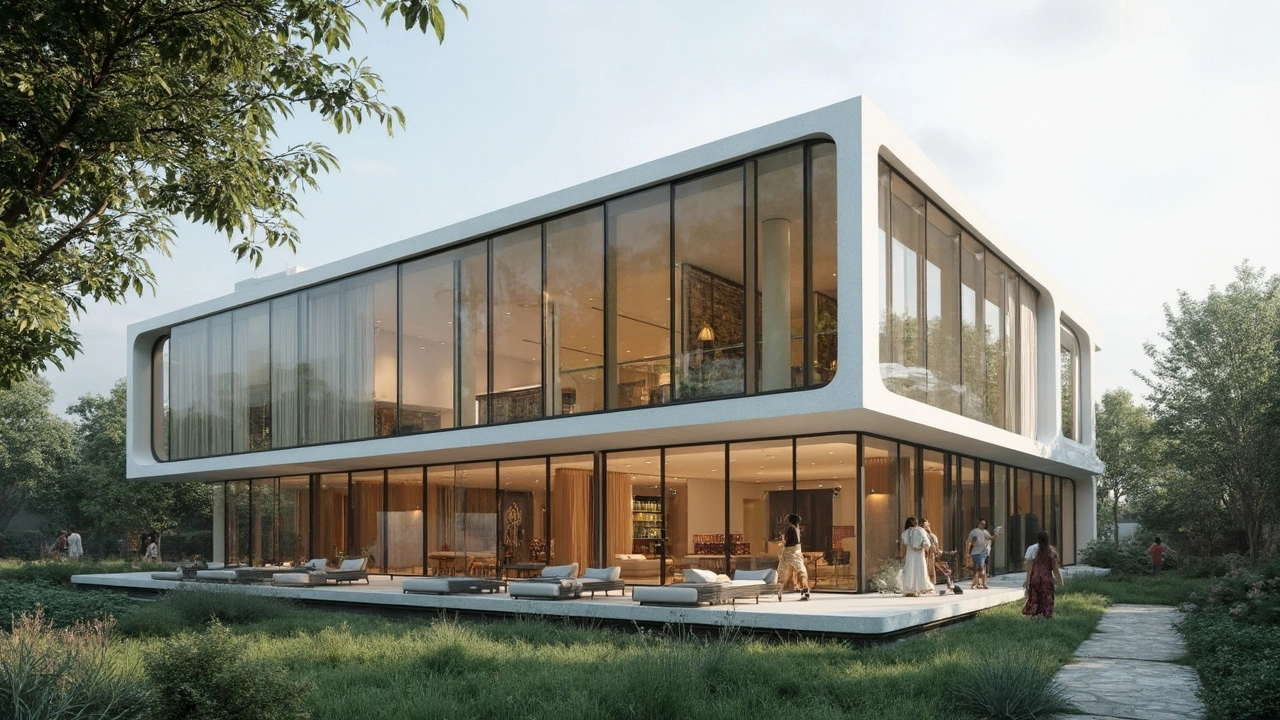Modernism: how to spot it, use it, and update it
Modernism once promised to throw out ornament and serve function. That promise still shows up in glass boxes, flat roofs, and open plans you see every day. If you want to recognize modernist buildings or bring modernist ideas into your home, focus on structure, light, and simple materials.
At its core, modernism favors honesty: materials that show what they are, layouts that prioritize use, and forms that follow purpose. Architects used steel, concrete, and glass to create long spans, thin profiles, and rooms that flow into each other. You’ll notice fewer moldings, more horizontal lines, and furniture that feels built in rather than added later.
Key features to spot
When you walk by a building and wonder if it’s modernist, check these clues:
- Flat or low-pitched roofs and strong horizontal lines.
- Large, unadorned windows or ribbon glazing—often steel-framed.
- Open floor plans with fewer internal walls and visible structure.
- Materials left exposed: concrete, brick, steel, or plain plaster.
- Minimal or no ornament; details are functional, not decorative.
- Integration with outdoors—patios, terraces, sliding glass walls.
Practical design and renovation tips
Want modernist style without making your home feel cold? Start with light and layout. Knock down a non-structural wall to open sight lines, then add consistent floor material to make spaces feel connected. Use wide, sliding glass doors or a simple set of clerestory windows to bring even light deep into the plan.
Choose materials that age well. Exposed concrete and terrazzo are classic, but a smooth white plaster or polished concrete floor gives the same clean look at lower cost. For warmth, layer in wood—teak cabinets or oak floors—used sparingly so the house keeps its modernist clarity.
Keep details honest. Replace ornate trims with simple reveals and choose slimline metal or black window frames. If you’re updating old single-pane steel windows, look for slim double-glazed replacements that match the original profile rather than bulky modern frames.
Furniture should support the architecture. Built-in seating, low-profile sofas, and multiuse storage keep the space uncluttered. Lighting belongs to the plan: recessed cans, simple pendants, and linear fixtures that follow beams or sight lines.
Preserving historic modernist homes needs care. Copying original joinery, repairing concrete rather than covering it, and using breathable paints help keep character while improving performance. If you’re unsure, consult a conservation-minded architect—small choices like restoring original windows often protect value and style.
Curious how modernism compares with other movements? Read a short primer on postmodern architecture for contrast, check minimalist tips for interiors, or try a functionalism overview to see how purpose shaped design. On Macklowe Art & Architecture you’ll find practical posts that link these ideas to real projects and easy DIY steps.
Want a quick checklist before a renovation? Take photos of original details, measure window profiles, note material patterns, and list the spatial moves you like most. These simple steps make it easier to keep the modernist spirit while making the house work for today.

The Rise and Rise of International Style in Modern Living
International Style is more than just a design trend; it's about pursuing simplicity, functionality, and global influence in architecture and interiors. Emerging prominently in the early 20th century, it's a style that continues to shape our spaces. The emphasis on clean lines, open spaces, and minimal ornamentation sets it apart. Today, International Style is celebrated for its timeless appeal, sustainability, and cultural integration, making it perfect for those seeking a blend of elegance and practicality.
Read more
Unstoppable Rise: Understanding International Style
International Style is a trend in architecture and design that emerged in the 1920s and 1930s. It emphasizes simplicity, functionality, and the use of modern materials. This style has become increasingly popular across the globe due to its clean lines and adaptability. From household items to skyscrapers, the International Style continues to influence contemporary designs. Exploring its features and evolution can offer fresh insights into its enduring appeal.
Read more